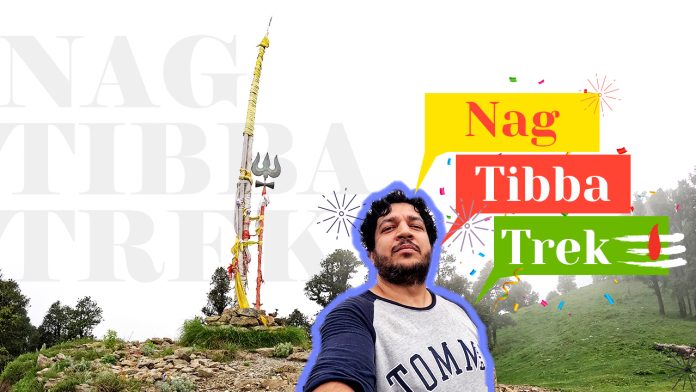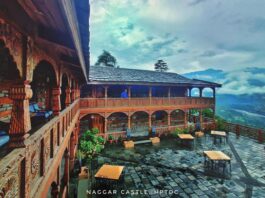I hate having to change my travel plans because of the weather. Instead of Ladakh, I decided to go for Nag Tibba Trek, considering the weather conditions and the havoc that rain created in Himachal and Ladakh.
I did plan to do the Nag Tibba Trek summit a few months back but some unforeseen circumstances foiled my plan. Well, I wasn’t going to Ladakh so why not Nag Tibba?
For my fellow travellers here is the most comprehensive article ever written on Nag Tibba. This article will have details about how to reach Nag Tibba, what is the distance and height and what to take care of when doing the Nag Tibba summit.
How to reach Nag Tibba?
Let’s talk about the basics first as to how you can reach the base of this mountain.
The gateway to Nag Tibba is Dehradun. Irrespective of the city you stay in, you need to reach Dehradun. I am from Jaipur and I took an overnight bus to Dehradun. The bus was fine as it was a Volvo sleeper, but the mad driver made a pit stop at substandard Dhaba, which spoiled my mood. You can reach Dehradun by road or by flight.
So once you reach Deharadun, you must go to the Mussorie bus stand and catch either a Uttrakhand government bus (Charge INR 80) or a taxi (INR 400) to reach the Mussorie bus stand. From Mussorie you can take a bus to Naiyanbagh or a shared taxi. From Naiyanbagh you can get a shared taxi to Pantwari.
Note* There are 3 shared taxi services that leave early morning by 8 AM to Pantwari, if you miss these shared taxis follow the above approach.
The place that you need to reach is Pantwari. The Nag Tibba trek starts from Pantwari and ends here.
Stay at the Mud House
I stayed at the Mud House that is between Mussorie and Kemtpy Falls. I do not like staying amidst the crowd. This place is awesome with a spectacular view. The houses are made up of mud with the ceiling crafted out of wood.
This place is away from Mussoorie’s traffic and crowd. The location is awesome surrounded by mountains and clouds.
Check out the view from the room’s balcony. Do not forget to follow me on Instagram.
The rooms are clean with hot water supply and the food is awesome. I prefer the mountain food anytime over the stuff that we get in the city. The cost is nominal which comes out to be INR 800 per room for a night.
From The Mud House to Pantwari
The next morning I took a shared taxi from just outside the Mudhouse to Pantwari. Pantwari is the starting point for Nag Tibba trek.
If you are in a group you can also hire a cab that is going to cost you approx 2500 from Mussorie to Pantwari. The shared taxi is going to cost you not more than INR 200. So for folks travelling solo, the shared taxi is a better option.
The Nag Tibba Trek
Day 1: Setting Foot in the Wilderness (Nag Tibba trek distance)
The total distance of Nag Tibba from Pantwari is 10 Km. Starting from the main market of Pantwari the first base camp is around 4 km, then from base camp to Nag Tibba summit is 6 KM approx. The Nag Tibba trek distance is less as compared to other treks in the region. Now to the story…
The crisp mountain air greets me as I step out of the cab onto the foothills of Nag Tibba which is Pantwari village. Our guide briefs us about the trek, its challenges, and the ethereal beauty we’re about to witness. Sanjay is an absolutely amazing guide with a lot of experience in trekking and has done a mountaineering course from NIMS. The package however differs on the basis of the number of people that are in your group. I am leaving Sanjay (Guide) and the organizer Amit’s number here for you folks.
Sanjay: 9639325078
Amit: 9625702599
The path starts gently, a dirt track winding through a forest alive with the sounds of birdsong and rustling leaves. The sunlight filters through the canopy, casting a warm glow on everything it touches. With every step, the urban hustle feels like a distant memory.
We are camping today at the first base camp which is about 4 km from the starting point. Here is what the campsite looks like.

Day 2: A Walk Through the Clouds (Nag Tibba trek package)
As I said above the package depends on the number of people in the group. It is better to get in touch with either Sanjay or Amit for the trek fees.
Today has been an absolute dream. The trail led us through a thick mist that hugged the landscape, creating an almost mystical atmosphere. The camaraderie among the trekkers grows stronger as we navigate the inclines and rocky terrain together. Our guide’s knowledge of the region is astounding; he points out different flora and shares intriguing stories about the local culture.



As we climb higher, the clouds part briefly unveil breathtaking vistas of the snow-capped Himalayan peaks. The sense of awe is overwhelming – it’s as if the mountains themselves are whispering secrets of ancient times.
Day 3: Reaching for the Summit & Nag Tibba height
The summit day is upon us, and my excitement is tinged with a dash of apprehension. We start early in the morning, our headlamps piercing the darkness as we ascend steep switchbacks.



The Nag Tibba trek climb is challenging, testing both physical endurance and mental determination. But with each step, the thought of witnessing the panoramic view from the top keeps us going.
And then, finally, we reach the summit. The sense of accomplishment floods through me, rendering me speechless. The world unfolds beneath us – rolling valleys, verdant forests, and distant villages. The sunrise paints the sky with hues of pink and gold, casting an otherworldly glow on the landscape. I stand there, a speck in the grandeur of nature, humbled and elated.
The summit is called Jhandi top and the Nag Tibba temple is different as shown in the images above.
Day 4: Homeward Bound – Nag Tibba trek best time
As we begin our descent back to the base camp, I can’t help but reflect on the incredible journey that the Nag Tibba trek has been. The friendships forged, the challenges conquered, and the sheer beauty of the mountains will forever be etched in my memory.
Back at the base camp, we celebrate our achievement with a sense of fulfilment that words can’t quite capture. Sitting by the campfire, under a sky full of stars, I feel a deep connection to the universe around me. The Nag Tibba trek has been more than just a physical adventure – it’s been a journey of self-discovery, pushing boundaries, and finding solace in nature’s embrace.
The best time to come to Nag Tibba is during summer when the trails are visible and are less slippery than in the monsoon season. You can also come in winter as it’s covered with snow and gives you a different thrilling experience.
Summing Up Nag Tibba Trek
Nestled in the lesser Himalayan range of Uttarakhand, India, the Nag Tibba trek stands as a captivating adventure for nature enthusiasts and trekkers alike. With its moderate difficulty level and stunning landscapes, this trek offers a perfect introduction to the breathtaking beauty of the Himalayas. Rising to an altitude of approximately 3,022 meters (9,915 feet), Nag Tibba offers panoramic views of snow-capped peaks, lush meadows, dense forests, and quaint Himalayan villages.
The trek’s accessibility and relatively shorter duration make it an ideal choice for both beginners and experienced trekkers seeking a rejuvenating escapade into the lap of nature. Embarking on the Nag Tibba trek promises an unforgettable journey through changing terrains, local culture, and a serene wilderness that captures the essence of the Himalayas.
Any questions about the Nag Tibba trek, please leave them in the comments below.




